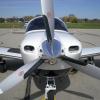What causes exhaust valve failure
-
Members Online
- A64Pilot
- varlajo
- haymak3r
- Boboli
- clh
- AF M20J
- Garmin Aviation Team
- ElkoRandy20J
- DonMuncy
- Peter T
- Rick Junkin
- outermarker
- eman1200
- ta2too
- TheAv8r
- Echo
- Marc_B
- Gregarious
- robert7467
- Greg Ellis
- philiplane
- Paul Thomas
- Accurate Aero
- pirate
- lotsofgadgets
- AndreiC
- N201MKTurbo
- Kevin Harberg
- Fly Boomer
- Flyler
- mooney_flyer
- larryb
- CCAS
- Falcon Man
- milotron
- Slick Nick
- Schrock Aircraft
- georgewdean1020
- 1967 427
- 201Mooniac


Recommended Posts
Join the conversation
You can post now and register later. If you have an account, sign in now to post with your account.